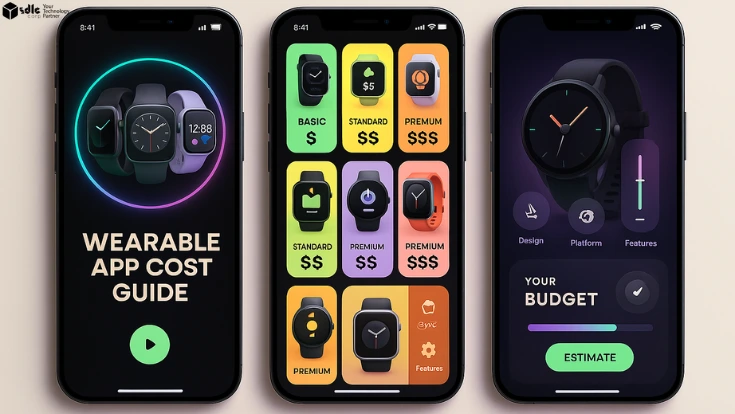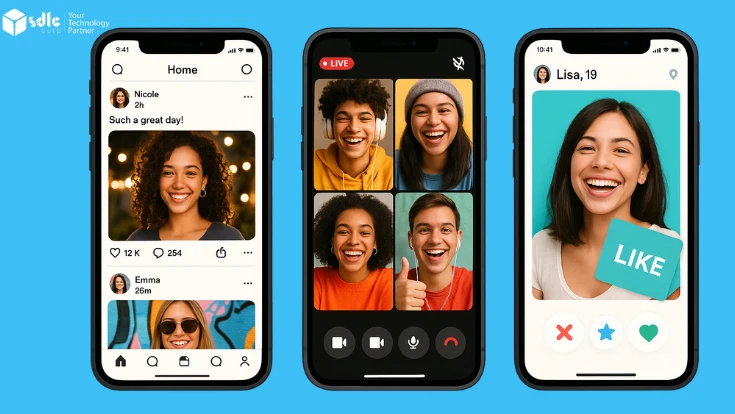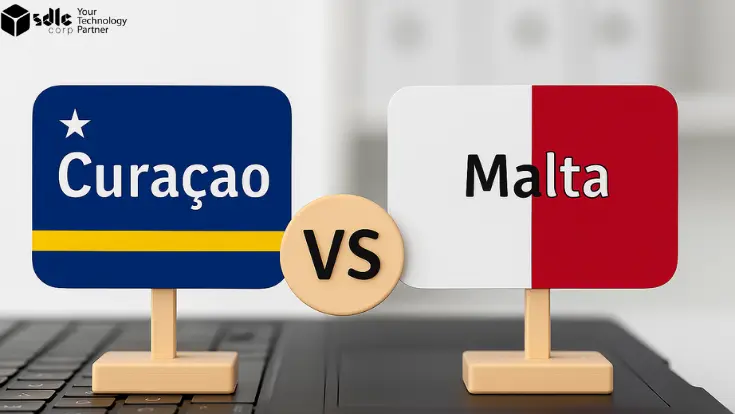To create a successful app like “Plushcare ” focus on attracting a large active user base, implementing effective monetization strategies, and ensuring broad availability on both Android and iOS. High engagement and retention can be achieved through personalized experiences and regular updates, while unique features and a user-friendly interface will help differentiate the app in a competitive market. Tracking these growth metrics will guide scaling efforts and optimize user satisfaction.
How much does it cost to develop a telemedicine app like Plushcare ?
To develop a App like Plushcare, you’ll need to build a robust, scalable architecture, create immersive app play, and focus on key elements like seamless integration and development solutions. This blog guides you through the process of game creation from concept to final product.

Growth of Plushcare : Key Stats

$ 0 M
2023 Annual Revenue
0 M
Number of Users
0 M+
Downloads
0 M+
Downloads
These growth metrics make it clear that building an app like “Plushcare ” offers a significant opportunity to tap into a rapidly expanding market and make a lasting impact in the industry.
Architecture of a Scalable App like Plushcare
Developing a scalable app like Plushcare requires a robust architecture that handles millions of users and ensures smooth performance. Key elements such as CDN, auto-scaling groups, and Redis work together to deliver seamless experiences. This framework supports high traffic, efficient data handling, and real-time updates, ensuring the app can grow and perform consistently.

By incorporating scalable components like auto-scaling groups, Redis, and MySQL, your app is well-prepared for future growth. This architecture ensures efficient performance under heavy user loads, making your app competitive in the market and capable of handling increasing user demands.
Features
To develop a successful app like Plushcare , it’s essential to incorporate key features that make connecting with others easy and engaging. These features should focus on enhancing user interaction, providing a safe and personalized experience, and making it easy for people to find meaningful connections. This will help create a platform that users will enjoy and keep coming back to.
Process To Develop
Building a app like Plushcare involves following a structured development process to ensure the app is user-friendly, scalable, and secure. Each phase, from planning features and design to deployment and updates, should align with the goal of creating a platform that facilitates meaningful connections and provides a safe, engaging user experience.

Market Research
Analyze the market and competitors like Rover to understand user needs, gaps in services, and key features that will differentiate your app.

Development
Build both front-end and back-end functionalities with technologies like MySQL, Redis, and cloud-based servers for scalability.

Deployment & Maintenance
Launch the app on platforms like iOS and Android, followed by continuous updates and user support to improve performance.

Design & Prototyping
Create a user-friendly interface with wireframes and prototypes that prioritize user experience and ease of use.

Testing
Conduct multiple tests, including functional, security, and performance testing, to ensure the app runs smoothly under various conditions.
How To Build?
Learn how to create an engaging app like “Plushcare ” with this guide. It covers essential steps such as designing user-friendly interfaces, developing advanced matching algorithms, and integrating chat and video features. Whether you are new to app development or have some experience, this guide provides insights into key aspects like app monetization, user retention strategies, and implementing unique features to enhance user interaction. The goal is to deliver a captivating experience that keeps users coming back.

Cost Break-Up
Understanding the cost to develop app like “Plushcare ” is crucial for budgeting and planning. The total cost depends on factors such as app complexity, features, technology stack, and development team. This section breaks down the costs involved, including design, development, testing, maintenance, and third-party integrations.
Features/Services
Basic/POC
Advanced
App Design & UI/UX
User-friendly design with custom themes
Advanced UI/UX with animations, personalized design, and high-end user experience
Core Features (User login, team creation, scoring)
Full-featured fantasy gameplay: user login, team creation, real-time scoring, leaderboards
Multiple game modes, dynamic user dashboards, and highly scalable gameplay
Backend Development
Robust backend with database and APIs for handling moderate user load
Scalable cloud infrastructure, real-time data processing, load balancing, and microservices architecture
Third-Party Integrations (payment gateways, notifications, etc.)
Integrated payment gateways, push notifications, and basic analytics
Advanced integrations: AI-based analytics, real-time notifications, blockchain for transactions, and cryptocurrency payments
Post-launch Support & Updates
3-6 months support with minor updates
12+ months of premium support, regular updates, AI-driven user personalization, and advanced data security features
Pricing
$10,000+
$50,000+
Types Of
Apps
- Build App Like OpenSea
- Build App Like Turo
- Build App Like Afterplay
- Build App Like Drizly
Popular Apps Development Services
Our Happy Clients














Why Choose Us?
Our expertise in game development ensures that we deliver high-quality, immersive gaming experiences. We specialize in custom design, seamless integration, and full-cycle development solutions that guarantee success. With our proven track record, we’re your ideal partner for building your next game.
Custom Design
We create tailored designs that align with your vision, ensuring that the game stands out and resonates with your target audience. From character models to game environments, every element is crafted to provide a unique experience.
Seamless Integration
We ensure all game components, from graphics to multiplayer features, are smoothly integrated to deliver a cohesive and immersive player experience.
Development Solutions Full Cycle
Our full-cycle development covers everything from concept to launch, providing end-to-end services to make the process streamlined and efficient.
Track Record of Success
With a history of delivering successful projects across various gaming genres, our team has the expertise and experience to handle even the most ambitious game development challenges.
Testimonials
Top-tier game services that enhance your gaming experience! From seamless account management to personalized support, our team ensures you get the most out of your playtime. Trusted by gamers worldwide for reliability, speed, and excellence. Level up with us!

Prabhakar Posam
CEO, Patang
On time delivery
Reporting
Communication
Code Quality
Availability
“I’ve never experienced such seamless gaming services before! The support team is always ready to help, and their account management features are top-notch. My gaming experience has significantly improved. Highly recommended!”
On time delivery
Reporting
Communication
Code Quality
Availability
“The personalized support I received was incredible. They handled my issues quickly and professionally, making my gaming sessions smoother than ever. Truly the best in the business!”
Contact Us
File a form and let us know more about you and your project.
Let's Talk About Your Project
- Free Consultation
- 24/7 Experts Support
- On-Time Delivery
- sales@sdlccorp.com
- +1(510-630-6507)
FAQs
What is the cost to develop a Plushcare App?
Developing app like “Plushcare ” can cost between $40,000 and $150,000, depending on factors like features, complexity, design, and technology stack. Basic features may cost $30,000 to $50,000, while advanced functionalities can raise it to $70,000 to $120,000. Additional expenses include $5,000 to $15,000 for UI/UX design, backend setup, third-party integrations, and annual maintenance (15-20% of initial costs).
What are the key Features of Plushcare App?
User Registration and Profile Creation: Allows users to sign up, create profiles with photos, and add personal information and interests.
Matching Algorithm: Uses preferences and filters (e.g., age, location, interests) to suggest compatible matches.
Swipe or Browse Functionality: Users can swipe left or right to like or reject profiles or browse through a list of potential matches.
Chat and Messaging: Enables users to communicate with their matches through text messages, voice notes, or video chats.
Push Notifications: Alerts users about new matches, messages, or app updates.
Location-Based Matching: Uses geolocation to suggest matches nearby.
In-App Purchases and Subscriptions: Offers premium features like unlimited swipes, boosted visibility, or access to additional match filters.
Social Media Integration: Allows users to sign up via social media accounts and import photos or other profile details.
User Verification and Security: Features like photo verification or two-factor authentication to ensure user safety.
Advanced Filters and Preferences: Options to filter matches by specific criteria such as lifestyle habits or relationship goals.
How much time does it take to develop an app like Plushcare ?
The time to develop a app like “Plushcare ” typically ranges from 4 to 9 months, depending on the complexity and features. Here’s a breakdown:
Planning and Requirements (2-4 weeks): Initial stage involves gathering requirements, defining features, and planning the project.
UI/UX Design (4-6 weeks): Designing the app’s interface and user experience.
Backend and Frontend Development (3-5 months): Coding the app’s core functionalities, including matching algorithms, chat features, and user authentication.
Quality Assurance and Testing (3-6 weeks): Testing for bugs and ensuring the app runs smoothly across devices.
Deployment and Launch (1-2 weeks): Publishing the app on app stores and making final adjustments.
Total time: Around 4-9 months, depending on the development team’s size, feature set, and project scope Mobile App Development.
How to Earn Money by launching an App like Plushcare ?
Here are some ways to earn money by launching app like “Plushcare “:
In-App Purchases: Offer features like profile boosts, super likes, or access to premium filters that users can buy.
Subscription Plans: Introduce premium membership options (e.g., monthly or yearly subscriptions) that offer additional perks, such as unlimited swipes, ad-free experience, or advanced matching algorithms.
Advertisements: Display ads from third-party networks or partner brands. Use targeted ads based on user preferences to increase ad revenue.
Affiliate Marketing: Partner with relevant companies (e.g., travel, gift shops, event organizers) to offer deals and earn commissions for referrals or purchases.
Virtual Gifts and Coins: Let users buy virtual gifts or coins to send to other users, creating a fun way to interact while generating revenue.
Event Hosting and Ticket Sales: Organize online or offline dating events, speed dating sessions, or meetups, and charge entry fees for participation.
Data Monetization: With user consent, collect anonymized data for market research or to sell insights to third-party companies.
How to choose the Technology stack to develop an App like Plushcare ?
Choosing the right technology stack for developing an app like “Plushcare ” involves considering factors such as app features, scalability, development speed, and budget. Here’s a guide on selecting the ideal technology stack:
Fantasy Sports App development company
Android App development company
Frontend Development: For a cross-platform app, consider frameworks like Flutter or React Native to develop for both iOS and Android using a single codebase. If opting for native development, use Swift for iOS and Kotlin for Android.
Backend Development: Choose a robust backend framework to handle server-side operations. Node.js (with Express.js), Django (Python), or Ruby on Rails are popular choices for developing scalable backends. Java or Spring Boot is also suitable for more complex server-side requirements.
Database: Use MySQL or PostgreSQL for structured data. Consider NoSQL databases like MongoDB for unstructured data or when flexibility is required. For caching, integrate Redis to improve app performance.
Cloud Services and Hosting: Opt for cloud platforms like AWS, Google Cloud Platform (GCP), or Microsoft Azure for scalable and reliable cloud hosting, storage, and computing services.
Real-Time Communication: Use technologies like WebSocket for real-time chat features or Firebase Realtime Database for quick, synchronized communication.
Push Notifications: Implement push notification services such as Firebase Cloud Messaging (FCM) or OneSignal to keep users engaged.
Third-Party Integrations: Integrate third-party services for specific functionalities, like payment gateways (Stripe, PayPal), social login (Facebook, Google), and analytics (Google Analytics, Mixpanel).
Security: Use technologies for data encryption (e.g., SSL/TLS), authentication (OAuth 2.0, JWT), and regular security audits to safeguard user data.
How SDLC CORP can help in App Development?
SDLC Corp provides a range of app development services, including Mobile App Development, catering to various needs such as Travel App, Sports Betting App Development company, Fantasy Sports App development company , and Android App development company . They offer customized solutions for native, cross-platform, and hybrid applications. Their expertise includes integrating essential features, scalable backend development, and ensuring robust security for apps across different industries, from travel booking to fantasy sports. SDLC Corp’s comprehensive approach supports businesses through design, development, testing, and ongoing maintenance.













